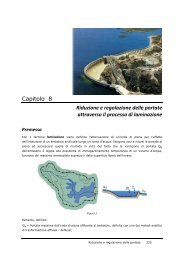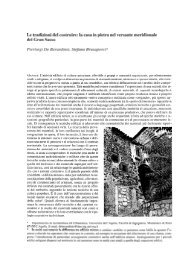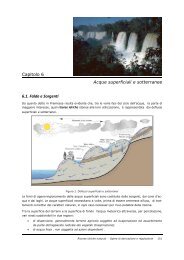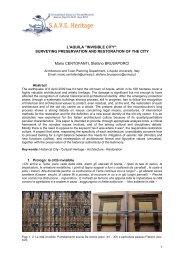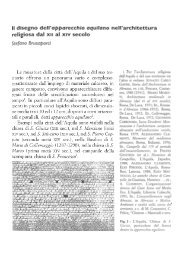Frammentazione ambientale, connettività, reti ecologiche
Frammentazione ambientale, connettività, reti ecologiche
Frammentazione ambientale, connettività, reti ecologiche
You also want an ePaper? Increase the reach of your titles
YUMPU automatically turns print PDFs into web optimized ePapers that Google loves.
Abstract<br />
Reti <strong>ecologiche</strong> 205<br />
Ecological networks - On the basis of an extensive background regarding this<br />
issue, it can be pointed out that:<br />
-the traditional focus of conservation of individual sites and species must progress<br />
towards a more holistic, spatial concern;<br />
-habitats must be large enough and sufficiently connected to enable the landscape<br />
to function ecologically. Such directives have recently been stated in international<br />
conventions, in pan-European strategies and national guidelines.<br />
The main goals of ecological network planning are to:<br />
- conserve the natural ecosystems, increasing the size and number of those under<br />
protection;<br />
- increase connectivity, taking into account species-specific differences in dispersal,<br />
reducing isolation of habitat and fostering gene flow among fragmentation-sensitive<br />
(sub)populations, assuring their viability;<br />
-increase permeability of the matrix to dispersal of sensitive species;<br />
-insert the conservation theories in the processes of landscape planning.<br />
Aconceptual framework for planning - Planning in ecological network is a<br />
complex exercise because of the large range of different contexts, spatial scales,<br />
species-specific response to fragmentation, ecological and anthropic variables of<br />
the “real world”, and no general rule can be formulated. A methodological pathway<br />
should foresee not only the context of study but also the ecological levels, the targets<br />
and the scales of investigation.<br />
Scale – Connectivity is related to an appropriate scale suitable to ecology and<br />
dynamics of sensitive (meta)populations and of those ecologically correlated.<br />
The operative scale for ecological network strategies appears to be the landscape<br />
one. Therefore it is advisable to apply strategies on multiple spatial scales, so covering<br />
a large interspecific range of ecological requirements and making them<br />
more effective.<br />
Context – The effects of habitat fragmentation are landscape-specific, depending<br />
on local, ecological, anthropic factors and planners have few generalizations<br />
to help them (the “it depends” dilemma): each strategy, built for specific local pro-



